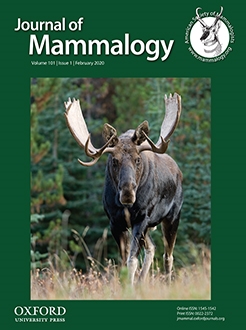Phenology in animals is strongly influenced by seasonality that promotes changes in abundance of food resources and temperature. These changes may impose energetic constraints to organisms in certain seasons during the year, especially on those animals facing high energetic demands, such as nectarivorous bats. Seasonality in temperate forests could, therefore, promote migration of female nectarivorous bat to find warmer sites, thus enhancing breeding success. To test this hypothesis, we compared the proportion of females and the proportion of pregnant females of the nectarivorous bat Anoura geoffroyi, between months, in six different populations across temperate forests of Mexico. Bats were captured over a complete season cycle either with sweep or mist nets at the entrance or near their roosting caves, and their age, sex, and reproductive condition were recorded. We found that over 50% of bats present in the cave roosts across different populations in temperate forests of the Trans-Mexican Neovolcanic Belt of Mexico during the warmer and wetter months (April–September) were females, both pregnant and nonpregnant. In contrast, fewer than 30% of bats present in the roosting caves sampled in the colder and drier months (October–March) were females. In addition, we found that the temperature that favors the proportion of females at the studied sites was greater than 8°C. We concluded that seasonality affects sex ratio and phenology of A. geoffroyi in Mexican temperate forests. Our findings suggest females' migrations to lowland warmer sites to improve prenatal development.
How to translate text using browser tools
5 December 2019
Ambient temperature drives sex ratio and presence of pregnant females of Anoura geoffroyi (Phyllostomidae) bats living in temperate forests
Romeo A. Saldaña-Vázquez,
Jorge Ortega,
José Antonio Guerrero,
M. Isabel Aiza-Reynoso,
M. Cristina MacSwiney G,
Pedro A. Aguilar-Rodríguez,
Jorge Ayala-Berdon,
Veronica Zamora-Gutierrez
ACCESS THE FULL ARTICLE

Journal of Mammalogy
Vol. 101 • No. 1
February 2020
Vol. 101 • No. 1
February 2020
climate change
cloud forest
nectar-feeding bats
Neotropics
Pine-oak forest




